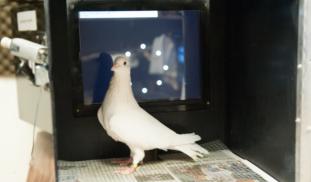Please wait...
About This Project
How do birds fly around objects without crashing into them? Their object perception must be similar to ours, despite having a dramatically different brain and separate evolutionary history. We will test whether bird brains handle object perception the same way that the human brain does. Pigeons will play a video game where they have to rapidly peck objects as they appear on a computer screen. The speed of their responses will tell us how the birds see the objects.
More Lab Notes From This Project

Browse Other Projects on Experiment
Related Projects
Brain dynamics in braille reading: Letters to language
Blind and low-vision readers read and write text using braille, a tactile system of raised dots. In this...
Mapping midlife minds: A study of women’s cognitive and mental health
Many women experience brain fog, memory lapses, anxiety, and mood swings during peri/menopause – yet we...
Developing a new evidence-based treatment for moderate to severe dementia
The World Health Organization calls for an increase in psychosocial interventions for dementia. While the...



